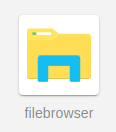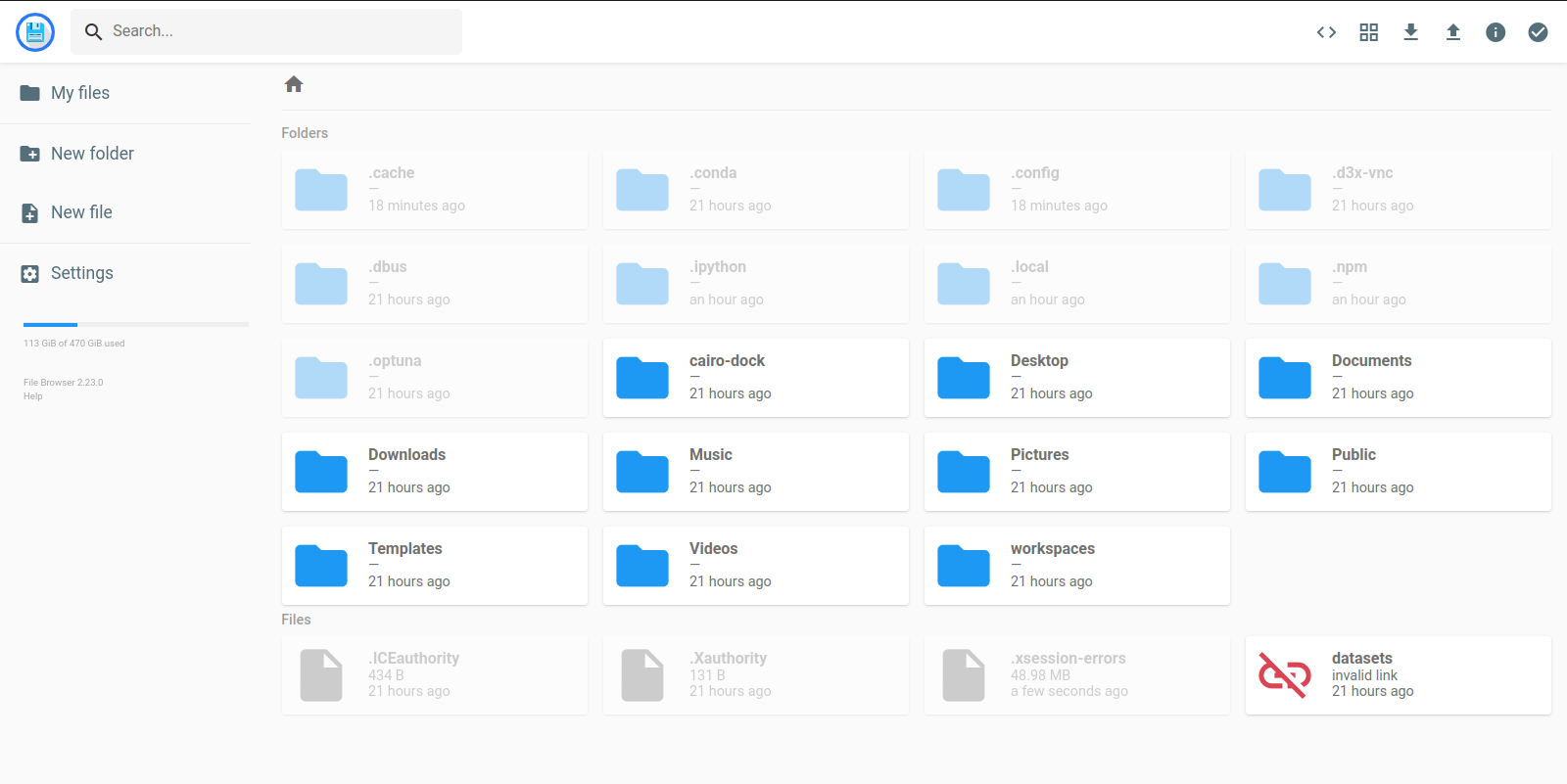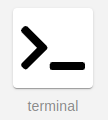Apps¶
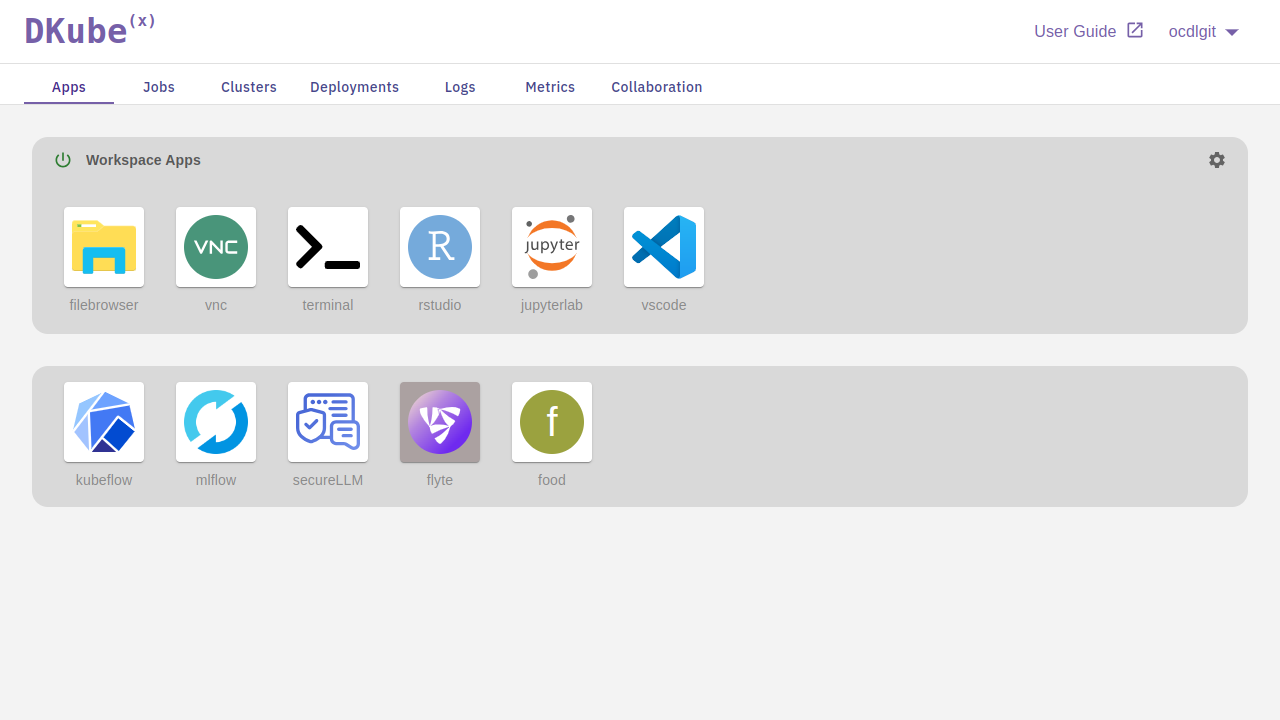
The Apps tab is the homepage for the DKubeX UI. It lists the tools and IDEs/code editors available for code design, running and deploying models, etc. Apps also hosts the user-launched LLM applications and the workspace settings.
Workspace Apps¶
- The following workspace applications are available in DKubeX:
File Browser
Terminal
JupyterLab IDE
VSCode IDE
RStudio IDE
VNC
Note
The workspace apps can be added or removed by the administrator, depending on the workspace template. Other applications can also be added as per need.
General Applications¶
IDEs¶
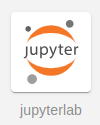
JupyterLab is a web-based interactive development environment developed by Project Jupyter for notebooks, code, and data. The flexible interface of this IDE allows users to configure and arrange workflows in data science, scientific computing, machine learning and more.

For more information about the JupyterLab IDE, please visit the Project Jupyter website at the following link: https://jupyter.org/

Visual Studio Code, also known as VSCode, is a source code editor IDE developed by Microsoft. It has been redefined and optimized for building and debugging modern web and cloud applications. Its main features include support for debugging, syntax highlighting, intelligent code completion, snippets, code refactoring, and embedded Git.

For more information about VSCode, visit the VSCode website at the following link: https://code.visualstudio.com/
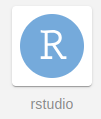
RStudio is an integrated development environment developed by Posit for R (a programming language for statistical computing and graphic), and Python. Its main features are its console, a syntax-highlighting editor that supports direct code execution, and tools for plotting, history, debugging, and workspace management.

For more information about RStudio, please visit the RStudio IDE page at the following link: https://posit.co/products/open-source/rstudio/
VNC¶
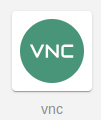
The VNC application, provided by noVNC, is an open-source virtual network computing client JavaScript library, and an application built on top of that library. It is a graphical desktop sharing system that enables the desktop display of one computer to be remotely viewed and controlled over a network connection.
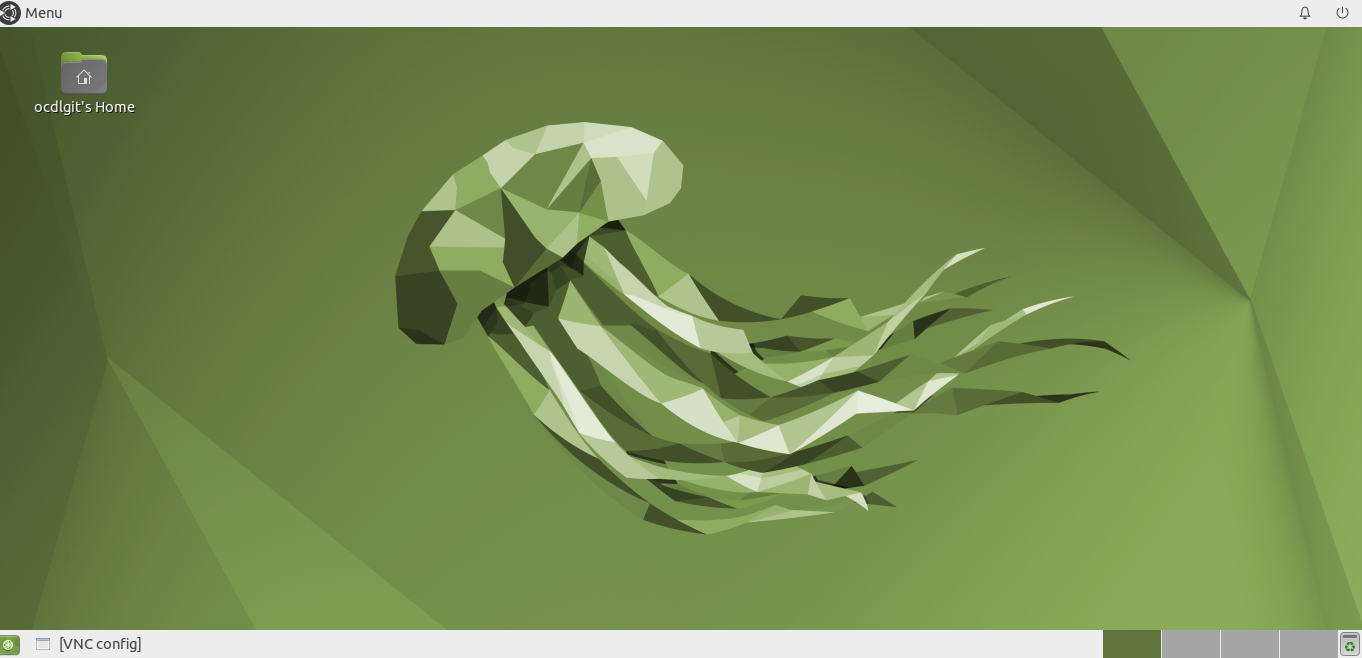
For more information about VNC, please visit the noVNC website at the following link: https://novnc.com/info.html
LLM and User Applications¶
LLM applications are or can be integrated with user applications involved with or utilising capabilities of LLMs. The LLM and user applications section also contains all user applications that has been launched/deployed by the user.
SecureLLM¶
DKubeX SecureLLM is a secure interface solution which facilitates observability and monitoring between AI app users and LLMs in use. For all requests from the AI applications, SecureLLM proxies these LLM calls and records both the request and response transactions.
For a detailed guide on how to use SecureLLM, please visit SecureLLM.
Kubeflow¶
Kubeflow is a free, open-source machine learning platform that allows machine learning pipelines to orchestrate complicated workflows running on Kubernetes.
For a detailed guide on how to use Kubeflow on DKubeX, please visit Kubeflow.
MLFlow¶
MLflow stands as a flexible and adaptable open-source platform crafted to handle workflows and artifacts throughout the entirety of the machine learning journey. With its innate capability to seamlessly integrate with numerous well-known ML libraries, it accommodates any library, algorithm, or deployment tool. Its architecture is intentionally designed for extensibility, enabling the creation of plugins to facilitate novel workflows, libraries, and tools.
For a detailed guide regarding MLFlow on DKubeX, please visit MLFlow.
Flyte¶
Flyte empowers users with highly concurrent, scalable, and reproducible workflows tailored for data processing, machine learning, and analytics. It excels in managing, automating, and tracking large-scale machine learning tasks and workloads.
For a detailed guide regarding MLFlow on DKubeX, please visit Flyte.
Workspace Settings¶
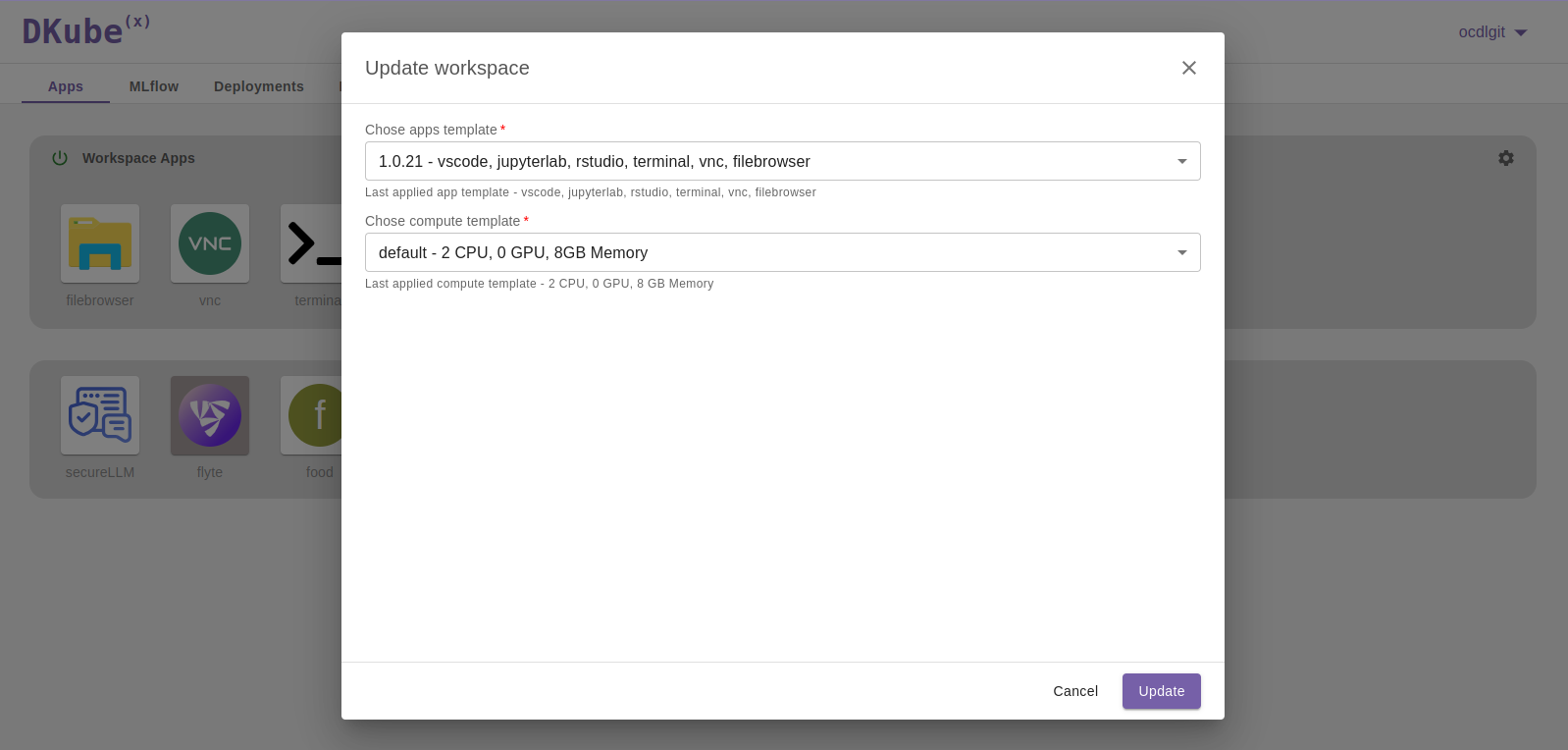
Edit Workspace¶
The Edit Workspace button lets you access the workspace-specific settings, where you can choose the applications and compute template you want to run.
Note
These templates are added by your administrator, and you can choose any combination shown.
To choose the templates and update workspace:
Click on the Edit Workspace button on the right side of the workspace applications.
Select the workspace application combination from the Choose apps template drop-down menu.
Select the compute template from the Choose compute template drop-down menu.
Click on the Update button.
Note
Updating the workspace with a new compute template restarts the pod, hence any unsaved changes in any of the applications will not be persisted. Please make sure that all changes are saved before updating the workspace settings.
Reset Workspace¶
The Reset Workspace button will allow you to reset the workspace to default settings
Click on the Reset button on the right side of the workspace applications.
Select the Reset option.
Confirm the option.
Note
This will only reset your workspace to default settings. not all the workspaces.
Terminate Worksapce¶
The Terminate workspace button terminates your workspace.
